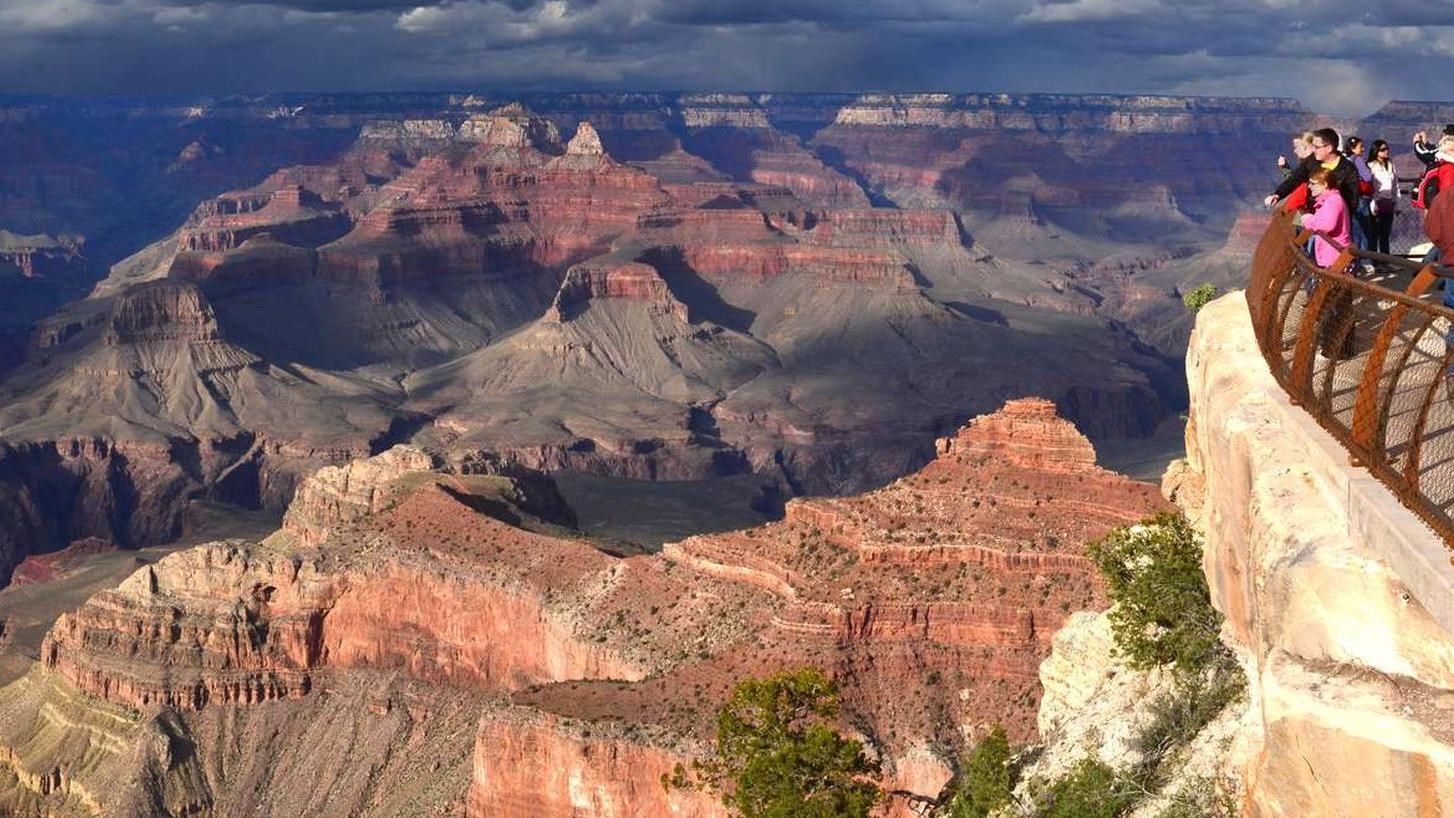Last updated: September 16, 2025
Place
Mather Point

NPS/M.Quinn
Amphitheater, Historical/Interpretive Information/Exhibits, Picnic Table, Scenic View/Photo Spot, Wheelchair Accessible
For many visitors coming to the South Rim, Mather Point offers the first glimpse of a world wonder. A short walk from the Grand Canyon Visitor Center and parking lots 1-4, Mather Point offers an expansive view of the canyon. On a clear day you can see 30+ miles (48 km) to the east and 60+ miles (96 km) to the west. Looking down into the canyon you can see a few small samples of the Colorado River, Phantom Ranch at the bottom of the canyon, and numerous trails crisscrossing the landscape.
There is no parking right at Mather Point, but the parking lots around Grand Canyon Visitor Center are a short walk away and the free Kaibab/Rim (Orange) Route shuttle bus makes a stop here as well.
Thanks to it's wide view and the dramatic formations visible from the area, Mather Point is a popular place for both Sunrise and Sunset throughout the year. Be sure to get here early to enjoy the change in colors as the sun rises and sets.
What's in a Name?
This viewpoint is named for Stephen Tyng Mather, the first director of the National Park Service. A wealthy businessman from Chicago, Mather was avid conservationist and supporter of public lands, who moved to Washington D.C. in 1915 to help found the National Park Service. Appointed its first director in 1917 he continued to promote park access, development, and use until he left office in 1929.
Mather believed that magnificent scenery should be the first criterion in establishing a national park, and made efforts to have new parks established before the lands were developed for other purposes. Mather always wished to have the parks supported by avid users, who would then communicate their support to their elected representatives. During his tenure the Park Service grew to include sites such as Grand Canyon, Shenandoah, Great Smoky Mountains, Mammoth Cave National Parks, and many others.
He laid the foundation of the National Park Service, defining and establishing the policies under which its areas shall be developed and conserved unimpaired for future generations. There will never come an end to the good that he has done.
